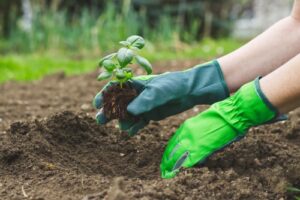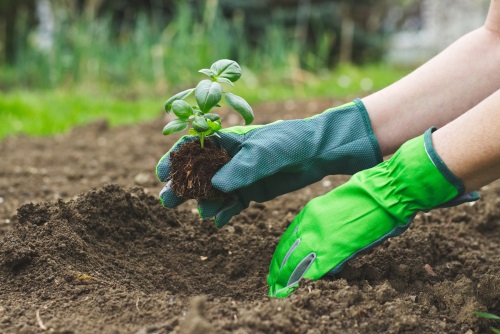Basil is easy to buy from the shops, but you can grow a wider range of types yourself at lower cost to you and the environment. The type sold in non-returnable pots is usually sweet basil suitable for salads and pesto, but there are also cinnamon and lemon basil, varieties with purple leaves that look great in green salads and spicy or liquorice-flavoured Thai varieties that combine well with Asian food.
Basil is a fast-growing, tender annual that needs lots of light, heat and water. Being very sensitive to cold, it is an ideal candidate for tunnels and glasshouses, especially in our unpredictable summers. It improves the flavour of tomatoes when served with them, and some say that it also does so when grown with them. It grows best in well-drained acid or neutral soil. Sow a succession of crops, but just a couple of plants each time is enough for regular use unless you want extra for pesto. Either sow them in cell-trays or in situ in the greenhouse soil, thinning them to single plants as soon as they are big enough to see. Use a scissors to avoid root disturbance. Thin or place the plants to about 30 centimetres apart. Harvest leaves as soon as the plants are about 20 cm tall, by cutting off shoot tips. Leave on the lower leaves until you discard the plant; they will produce the food to grow new shoots from the lower side-buds. Even if you need no basil, cut off the tips to prevent flowering (which makes the leaves bitter) and encourage fresh sprouts to grow. Surplus leaves can be either frozen for later use or composted, and the flower-buds are edible too.






